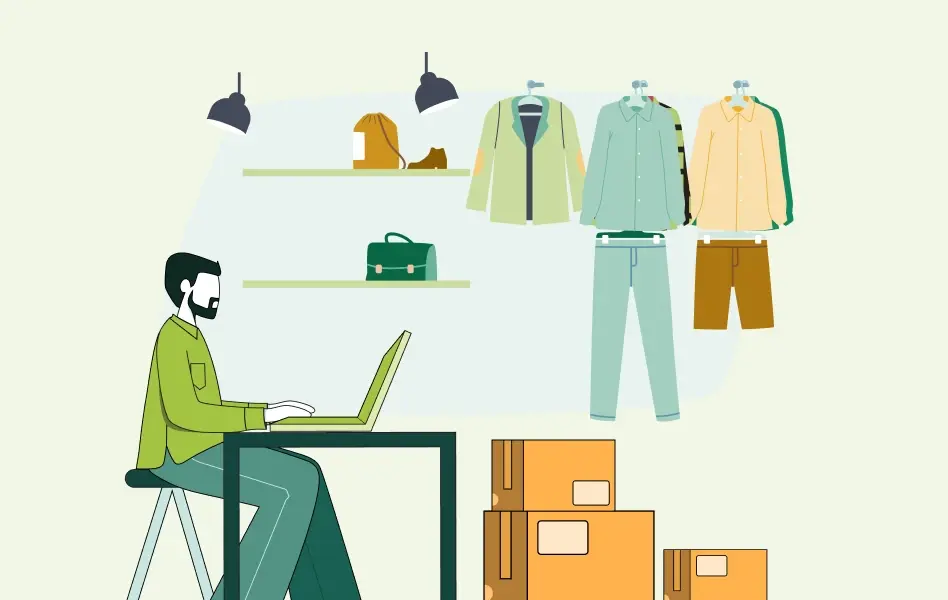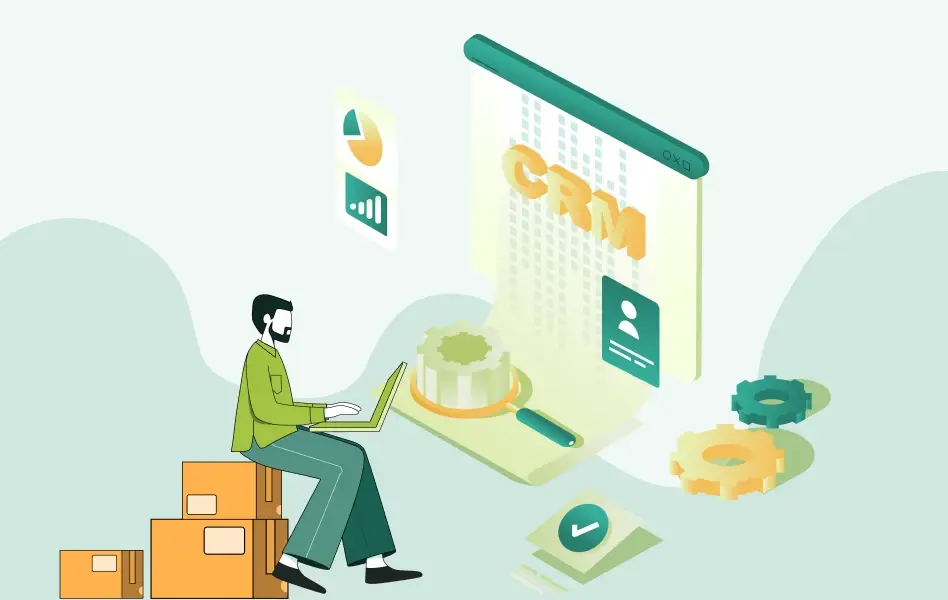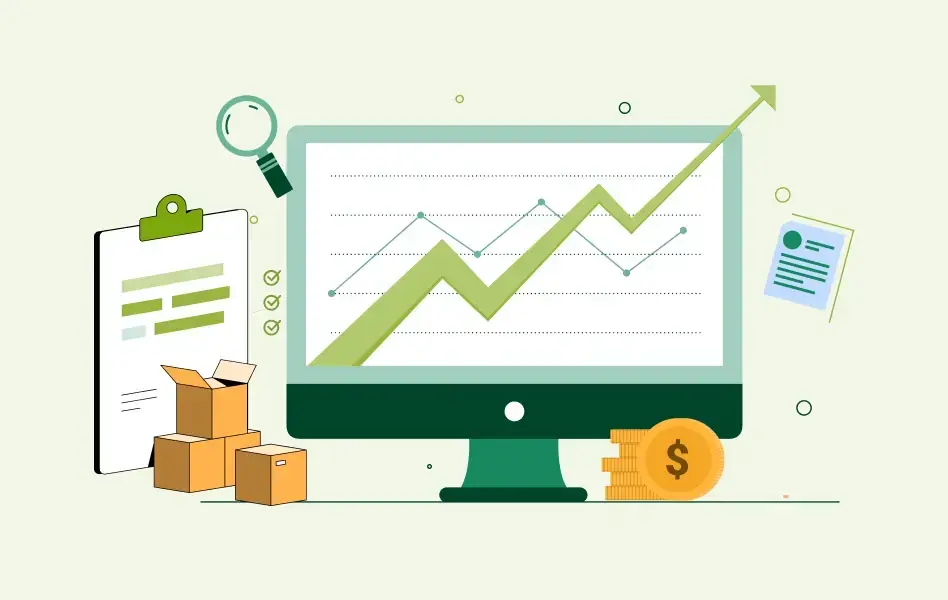Contents
In today’s rapidly evolving digital landscape, a storefront is not just a nice-to-have asset for wholesalers; it’s an essential requirement. This quote by Ben Chidiac, Co-founder of Beard & Blade, perfectly explains the importance of a B2B storefront.
“Without a doubt, the biggest myth about a wholesale business is that the self-service ordering model used in retail won’t work. As in retail, business customers benefit greatly from the time and effort savings of online ordering, in their own time, with full visibility of the status of their order.”
In fact, a 2021 report published by Salesforce reflects a significant shift in the business landscape.

This impressive shift towards digital sales underscores the vast potential of online storefronts in the B2B realm. The market is filled with numerous SaaS products designed to help set up B2B storefronts and agencies that claim to excel in e-commerce design, driving this adoption. Yet, despite these promising trends, a critical gap emerges in the quality of implementation. Despite the available technology, many B2B storefronts are poorly designed and fail to consider the end user’s experience.
The root cause of the problem is a simple case of misaligned incentives. SaaS companies have pretty much focused on agencies as their custodians instead of store owners. Why? When wholesalers think about setting up a store, they don’t have internal capabilities. Most don’t have tech or design teams experienced in launching e-commerce sites. They’ll usually find someone else who can do this for them, and those agencies/ developers then recommend which service to use, Shopify vs Magento or BigCommerce or whatever else.
Agencies/Developers are either paid per project, in which case the sooner they finish the project, the faster they can move to the next, or on an hourly basis, in which case the more complexity they show there is, the more time it takes and money they make.
In neither model are their incentives aligned to the store’s success. This is not to suggest that all agencies or developers engage in questionable practices or mislead their clients. But in most cases, it’s hard to anticipate what you get at the end of the engagement.
Additionally, many e-commerce storefronts like Shopify and Magento, initially designed for retail, pose their own set of challenges. Their inbuilt functionalities barely work for wholesalers and, therefore, require numerous customizations or add-ons to tailor the experience effectively. This underscores the significance of making well-informed choices in establishing your online footprint.
Let me be clear, this is not a blog on how to choose an agency/ SaaS platform, but key concepts you need to know to make sure your storefront is a success.
Setting a clear objective for your B2B Storefront
First and foremost, define your objective.
Do you want to streamline the ordering process for your current customers, focus on gaining new clients, boost your digital presence, or perhaps achieve a blend of these objectives?
Your current customers have already engaged with your business. They are familiar with your products and services and have a history of transactions and interactions with your company. These customers value reliability, consistent quality, and efficient service. They appreciate streamlined processes, personalized experiences, and recognition for their loyalty. They don’t need to discover you online.
On the other hand, new customers are looking for your products, but they require more information and persuasion than existing customers. These customers typically seek trustworthiness, value, and proof of your business’s credibility. It’s essential to focus on clear communication, compelling marketing, and a strong digital presence to attract new customers. Their experience with your storefront will be a significant factor in their decision-making process, requiring a balance of informative content and an easy-to-navigate interface.
The experience for both has to look very different. In today’s blog, We’ll focus more on the experience you need to provide to your current customers because that’s a more important use case for wholesalers. Why?
Because 79% of B2B leaders say their customers prefer to make repeat purchases on a digital storefront. You don’t want to lose out on these relationships you’ve nurtured over the years because of a poorly designed storefront.
Now that we have identified who we are building the storefront for, we need to align the design of our storefront to customer needs.
Optimizing your B2B storefront for success
Optimizing your B2B storefront for success requires a deep understanding of your customers’ needs and expectations. A key factor in this process is ensuring that the online shopping experience is as intuitive and efficient as ordering through a traditional sales representative. To replicate the experience, we must drive inspiration from the offline sales process and most importantly what matters to our customers.
Moving on to the specifics, key things that matter to existing customers are
1. Product Discovery and Updated Product Information
Sales reps dive deep into what your customers are looking for, understand their business, and what products they are looking for, and, based on all this, show products they might be interested in along with the information they seek. They also recommend complementary products to increase the order value and increase sales.
Your B2B storefront should provide the same experience to your customers. It’s important to ensure customers can effortlessly discover and understand your products. This includes providing clear, accessible information on the latest products, availability, and pricing.
Let’s take an example to understand this. A home decor wholesaler sells to architects and designers. Designers are looking to set up a new project, already having a theme in mind. They are looking for products that will go with that theme, that can help their project come to life. They probably know how much they want to spend on each product line, considering they have a budget to meet.
Good product discovery for this customer would have essential elements like
- Filters that increase discoverability: Ability to filter through price range, color, patterns, materials, and likely through a combo of these. Using these filters, architects/designers can easily find products that match their themes(color, pattern, material, etc) and their budget.
- New, Trending Products filters: The ability to filter for what’s new, and what they have not seen before can help them set apart. Designers might discover some unique, trendsetting pieces that can differentiate their projects.
- Recommended Products: When they find a rug they like, tell them what other coffee tables or sofas, go well with it. They are likely looking for all those things, and they must complement each other.
- Curated Bundles/Frequently bought together: If customers usually buy combos, it can also help if you give them curations/ bundles to buy. Curated bundles with discounts on the bundle can likely make their job super easy.
- Last Bought/Recently Bought Section/ Filter: While this may not be valid for all industries in some industries like packaging materials, often your customers buy the same thing over and over. Instead of having them filter through 100 things, you can show a section of last bought/recently bought items and make reordering products easy. Important Note: Understand your customers, how they make decisions, and curate your product discovery experience accordingly
2. Personalization
Now, when the sales rep approaches your customers, they know the categories and types of products your customers are looking for. They don’t show your customers items that they are not interested in and waste their time.
Your storefront should provide an experience that mirrors this.
You can create buyer groups by persona and, instead of one-to-one personalization, create group-level personalizations. This can come in many forms:
- Relevant categories: Display only the categories that each buyer group frequently purchases from, streamlining their browsing experience.
- Curated Collections: Develop personalized or curated collections for different buyer groups(check out the work WizAI is doing)
- Targeted Discounts: Offer special discounts and promo codes targeted to specific buyer groups, adding an element of exclusivity and incentive to their shopping experience.
3. Ease of checkout
By now, you know the drill. Understanding the nuances of the offline checkout experience is the key to making the online checkout feel familiar and easy for your customers.
For instance, if customers are accustomed to negotiating discounts, your online checkout should reflect this. Failure to offer similar discounts on your storefront as they would receive through direct interactions with sales teams may deter them from adopting the website for anything beyond small orders.
If you are a home decor wholesale, designers would be one of your primary customer segments, and they would order these things to new locations (i.e., their actual project’s location rather than a central warehouse). A good checkout experience includes
- Multiple Addresses: Ability to quickly add addresses and ship them to various project locations.
- Delivery Scheduling: Option to set an expected delivery date.
- Easy Payment: Simplified process to select and use different payment cards.
If, on the other hand, you are a packaging company, and most of your orders are re-orders. Having pre-set orders with the ability to change quantities, selecting delivery options from pre-set addresses quickly, and then requesting a quote might be a better checkout flow. Once the quote is responded to, the customer should approve it and just check out using the pre-set preferred payment option as well.
Walk backward from what the customer wants to do and ensure your ordering flow is customized for that. A best-in-class storefront can offer different experiences to different customer types.
You should also think of your customer’s approval flow. If your buyers have complex approval flows for quotes, adding a flow for that will also help. There are many ways to configure this, and this probably requires a separate blog altogether.
4. Order Tracking, invoices, and more
Emailing customer service for a basic order status update is not only inconvenient for your customers but also creates additional costs for your business. To address this, provide a straightforward tab on your B2B Storefront where customers can track all their orders, view tracking numbers, and access invoices for each order. Displaying the estimated delivery date prominently allows them to plan their schedules accordingly.
Additionally, customers often need to share this information with their team members. Facilitate this by enabling easy sharing options directly from the order tracking page. To make this feature effective and reliable, it’s essential to integrate your B2B Storefront with your ERP and accounting software, ensuring that all the information displayed is accurate and up-to-date.
5. Virtual AI Sales Rep
Just six months ago, having an AI chatbot that could mimic a sales rep seemed out of reach. But with technology advancing so quickly, it’s now a real business option. Here’s how an AI chatbot can elevate customer experience in your storefront:
- Personalized Product Guidance: Like a sales rep who suggests products based on a customer’s needs and past purchases, the AI chatbot can recommend products tailored to each customer’s preferences and browsing history.
- Instant Responses: Similar to a sales rep promptly answering questions, the chatbot immediately responds to queries about products, prices, availability, and other information, making the online experience more conversational and responsive.
- Order Updates and Inventory Checks: The chatbot acts like a sales rep who checks the back office for stock levels or order statuses, giving customers up-to-date information on their purchases and available inventory.
- After-Sales Support: Emulating a sales rep’s role in providing post-purchase support, the chatbot can handle after-sales queries, process returns, and gather feedback, maintaining ongoing customer engagement.
6. Make customer’s life easier
I think it’s clear by now, that the job of the storefront is to make customer’s life easier and cater to their needs.For instance,If your customers are independent retailers, once they buy from you they will have to tag the products as well as upload the product information onto their storefront/ POS system.
To offer a more delightful experience to them, you can give them these functionalities
- Price tags- The functionality will help your retailers select products they ordered and print a price tag. They should be able to customize the tag, especially pricing, and add a mark-up to their wholesale price
- Product information- Similar to price tags, retailers should be able to download product information, including image links, and attribute information as a CSV or Excel so they can easily modify it and upload it to their websites/ POS systems.
Another example is if you sell to architects/ designers, more project-based buyers. They will need to put together a presentation to show their customers all the product options they are proposing. Making it easier for customers to download their selected product(s) as a professional presentation saves them hours they would have otherwise spent to make the deck.
I think this goes back to having a deep understanding of your customers and their business processes to try and make their lives easier. The more time you save them, the easier you make their lives and the higher your retention rate. Over time, the customer will just prefer buying from you because it’s so much easier than buying from your competitors.






































































































